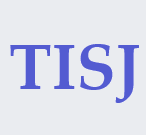Talk:Assessing the Reliability of Google Scholar in Predicting Scopus Citation Metrics
The article titled "Assessing the Reliability of Google Scholar in Predicting Scopus Citation Metrics" by Giuseppe Lippi provides a timely and relevant contribution to the ongoing discourse surrounding research evaluation and bibliometric reliability. The study's objective—to compare the citation counts and H-index values derived from Google Scholar and Scopus—is clearly articulated and addresses a significant concern in academic assessments, particularly in contexts such as the Italian National Scientific Habilitation. The use of correlation coefficients and Bland-Altman plots to evaluate agreement between the two databases is methodologically sound and allows for an insightful comparison. The results reveal high correlation coefficients for both citation counts and H-index values within and between databases, affirming that while Google Scholar and Scopus differ in coverage and selectivity, they rank researchers similarly in relative terms. The finding that Google Scholar generally reports higher values, due to its broader inclusion of gray literature and non-peer-reviewed content, is consistent with existing literature and underscores the necessity of interpreting bibliometric data within the context of database scope and curation policies.
However, the article does exhibit several limitations that merit attention. The study sample, restricted to 30 scientists from a single institution, constrains the generalizability of the findings. Furthermore, the absence of consideration for disciplinary variability, which is known to significantly influence citation behaviors, reduces the robustness of the conclusions. The methods section, while generally informative, contains minor typographical errors and unclear segments that detract from the overall clarity of the study’s execution. Additionally, there is no mention of validation or error-checking processes when merging multiple Scopus profiles for individual researchers, a step that could introduce inconsistencies. The analysis is also temporally static, relying on a single data collection point, which limits insight into the stability or evolution of these metrics over time. The discussion appropriately acknowledges the limitations of both databases, but a more in-depth examination of the implications of using potentially inflated metrics for official evaluations would have strengthened the critical perspective of the article. Despite these shortcomings, the study provides valuable empirical evidence supporting the complementary use of multiple bibliometric sources in research evaluation. The conclusion—advocating for balanced and multifaceted approaches to measuring academic impact—is well justified and aligns with best practices in scientometric research. Overall, the article serves as a useful, albeit limited, examination of a critical issue in academic evaluation.
